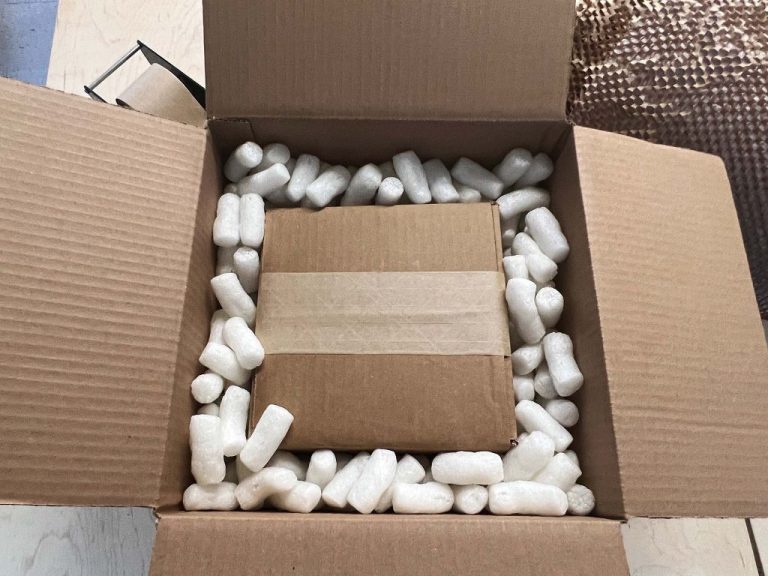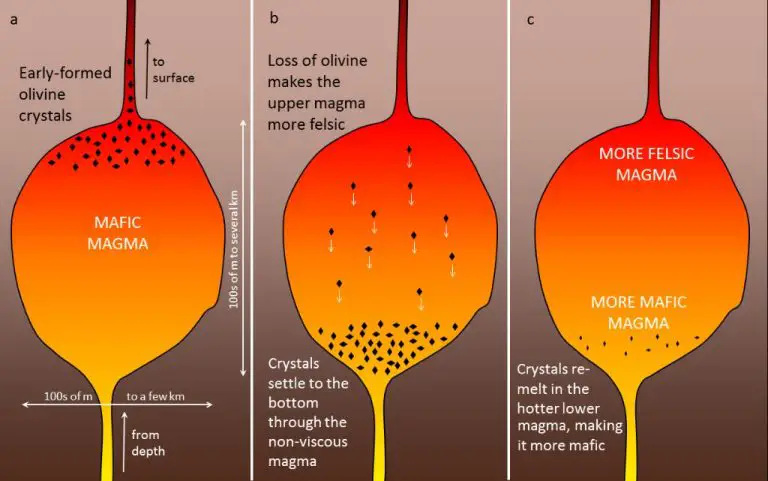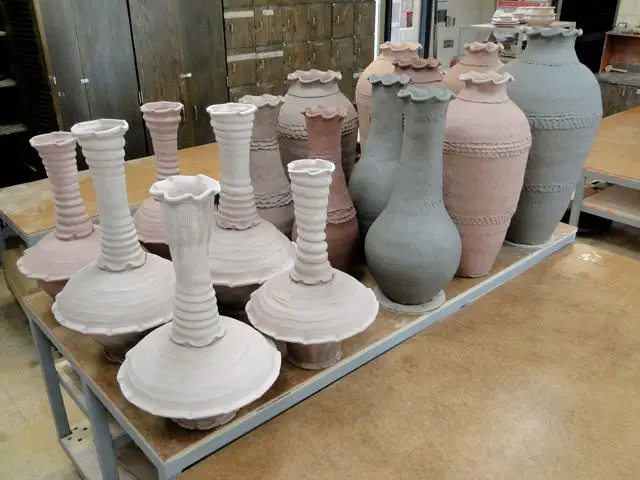Will Spray Paint Stick To Clay Pots?
Decorating clay pots with spray paint is a popular DIY project. Spray paint can adhere to the porous surface of terra cotta or ceramic pots with proper preparation. The key steps are cleaning, sealing, choosing the right paint, spray painting technique, and curing. With some basic knowledge, spray paint can create a durable, vibrant finish on clay flower pots and planters for both indoor and outdoor use.
Types of Clay Pots
There are three main types of clay used to make pots: terracotta, ceramic, and porcelain.1
Terracotta is an unglazed, porous earthenware made from natural clay that has been molded and fired at high temperatures. It has an earthy red-orange color and feels slightly gritty to the touch. Terracotta pots are inexpensive, durable, and allow air and water to pass through the material. However, they are also prone to cracking.
Ceramic refers to clay that has been shaped and fired in a kiln. Ceramic pots can be glazed or unglazed. Glazing makes the surface non-porous so it won’t absorb liquids. Unglazed ceramic is porous like terracotta. Ceramic pots are inexpensive but more delicate than terracotta.
Porcelain is a fine, white clay that becomes glass-like when fired at extremely high temperatures. Porcelain pots have very smooth surfaces and delicate, refined appearances. However, they are also the most fragile type of pottery. Porcelain pots tend to be more expensive than terracotta or ceramic.
Benefits of Spray Painting Clay Pots
One of the main benefits of spray painting clay pots is that it allows for easy customization and more color options. With spray paint, you can transform a basic terra cotta pot into any color you desire – from bright and bold primaries to more muted earth tones. This allows you to match your pots to your home’s exterior color scheme, coordinate with outdoor furnishings, or just add a fun pop of color to your garden or patio.
Spray paint also provides much more durable and long-lasting color compared to simply painting the outside of a clay pot with acrylic craft paints. The specially formulated spray paints are designed to adhere to porous surfaces like unglazed terra cotta. This allows the color to resist chipping, peeling, and fading even when exposed to outdoor elements.
Overall, spray painting gives you creative freedom when decorating with clay pots. You can paint patterns like stripes or polka dots. Or give pots a distressed or antiqued look with techniques using spray paint. Changing up the color and look of pots is an easy DIY project that allows you to refresh your space season after season.
Challenges of Spray Painting Clay Pots
One of the main challenges of spray painting clay pots is that they have a porous surface that can absorb paint unevenly. According to experts at A Colorful Journey, clay pots are porous, so spray paint can soak into the surface and look splotchy. The porous nature of the clay means that thorough surface preparation is needed before spray painting.
Another challenge with clay pots is that any moisture trapped in the clay can cause the paint to bubble, crack or peel. As recommended by Kenarry, clay pots should be fully cured, dry and clean before attempting to spray paint them. Any oil or dirt residue can prevent proper paint adhesion.
Cooler weather can also be an issue for spray painting clay pots. A Colorful Journey suggests the optimal temperature range is between 50-90 degrees Fahrenheit. Colder temperatures prevent the paint from bonding and drying properly on clay surfaces.
Preparing the Surface
Properly preparing the surface of clay pots is crucial for spray paint to adhere well. Clay is porous, so there may be dirt, grime, and dust accumulated that needs to be cleaned off.
Start by scrubbing the pot thoroughly with soap and water using a stiff brush or abrasive sponge, according to How To Paint Terracotta Pots Step-By-Step. Pay extra attention to crevices and carvings where debris can collect. Rinse and let the pot dry completely.
Next, lightly sand the terracotta with fine grit sandpaper, which helps the paint grip better. Focus on any glossy or shiny areas. Wipe away dust with a tack cloth.
It’s highly recommended to apply a primer coat first before spray painting. The primer creates a uniform surface for the paint to adhere to. Use a primer formulated for ceramics or terra cotta, applying a light even coat per the manufacturer’s instructions.
Choosing the Right Paint
When selecting a spray paint for terra cotta pots, it’s important to choose a paint formulated specifically for use on ceramics and terracotta. The porous nature of terra cotta requires paints that can flex and won’t flake or peel easily.

Acrylic craft paints are a good option as they are designed for use on ceramics and cling well to porous surfaces like terra cotta. According to Rust-Oleum, their acrylic spray paints offer maximum coverage and durability on terra cotta pots.
Oil-based enamel spray paints also work well on unglazed terra cotta. The Krylon Fusion spray paint line is specifically formulated to bond to difficult surfaces like terracotta. Their terracotta spray paint provides a durable, chip-resistant finish.
Avoid standard latex and multi-purpose spray paints. Stick with paints designed for ceramics and terracotta to ensure proper adhesion and durability when spray painting clay pots.
Spray Painting Techniques
When spray painting clay pots, it’s important to use proper technique to achieve an even, smooth finish. Here are some tips:
Apply light coats of paint rather than heavy coats. Heavier coats are more likely to drip or run. Keep the spray can 6-12 inches from the surface of the pot and spray in light, even strokes. Allow each coat to dry completely before adding another.
Angle the spray paint can parallel to the surface of the pot. If you hold it at too much of an angle, the paint is more likely to drip. Aim for a 90 degree angle between the can and pot.
Rotate the pot as you spray so all sides get an even coat of paint. It often works best to do horizontal strokes across the top and sides, then flip the pot to coat the bottom and other side.
When spray painting intricate or detailed pots, use spray paint formulated for crafts rather than standard spray paints. The nozzle disperses a finer mist that can get into crevices. Also use short, targeted bursts rather than broad strokes.
Take your time and be patient when spray painting clay pots. Building up several thin coats will give you a smoother finish than trying to fully cover the pot in one coat. Allow ample drying time between coats.
Sealing the Paint
Once the paint on your clay pots is fully cured and dry, it’s important to seal it with a protective clear top coat. This helps protect the painted design from damage caused by weather, moisture, and UV rays. According to Practically Functional, a clear acrylic sealant formulated for outdoor use is recommended for sealing painted terra cotta flower pots.
When choosing a sealer, make sure it is non-toxic and safe for plants. Water-based acrylic sealants are a good option. Be sure to check the product instructions to confirm it can be used for outdoor purposes on clay or terra cotta. Apply 2-3 thin coats of the sealant, allowing each coat to fully dry in between applications. This helps ensure complete coverage and protection. As noted by Creative Ramblings Blog, letting the sealer cure for at least 48 hours before using the pots allows for maximum durability.
Sealing painted clay pots provides a protective barrier that prevents chipping, fading, and wear over time. It helps lock in the paint and finish evenly across the terra cotta surface. With a quality clear coat, beautifully painted pots can be enjoyed for many seasons.
Curing and Drying Time
When spray painting clay pots, it’s important to allow adequate time for the paint to fully cure and dry before using the pots or adding plants. According to recommendations from Krylon, the spray paint will be dry to the touch within 10-30 minutes depending on humidity and other weather conditions. However, the curing process takes much longer.
For the paint to fully cure, experts recommend allowing 48-72 hours before exposing the painted clay pots to weather or watering plants. The curing time allows the paint to harden completely and build adhesion to the clay surface. Rushing this process can cause the paint to peel, chip or scratch off the clay pot.
Weather conditions play a big role in cure times. Cool, dry climates may only require 48 hours curing time while hot, humid climates could need the full 72 hours or longer. Check the specific spray paint brand’s recommendations as well. Once the paint has fully cured, clay pots can be safely used outdoors and hold plants.
Summary
In summary, spray paint can successfully adhere to clay pots with proper preparation and technique. The key is to thoroughly clean and lightly sand the clay surface to remove any debris or residue. Choosing a spray paint formulated for ceramics or high gloss enamels is ideal for creating a strong bond. Apply thin coats, allowing proper drying time between applications. Finally, sealing the spray paint with a top coat of varnish ensures durability. With the right products and methods, clay pots can be transformed with a beautiful, lasting spray painted finish.
The takeaway is that with proper cleaning, sanding, paint selection, and sealing, spray paint will stick to clay pots and elevate them with color and decoration that withstands the elements.






